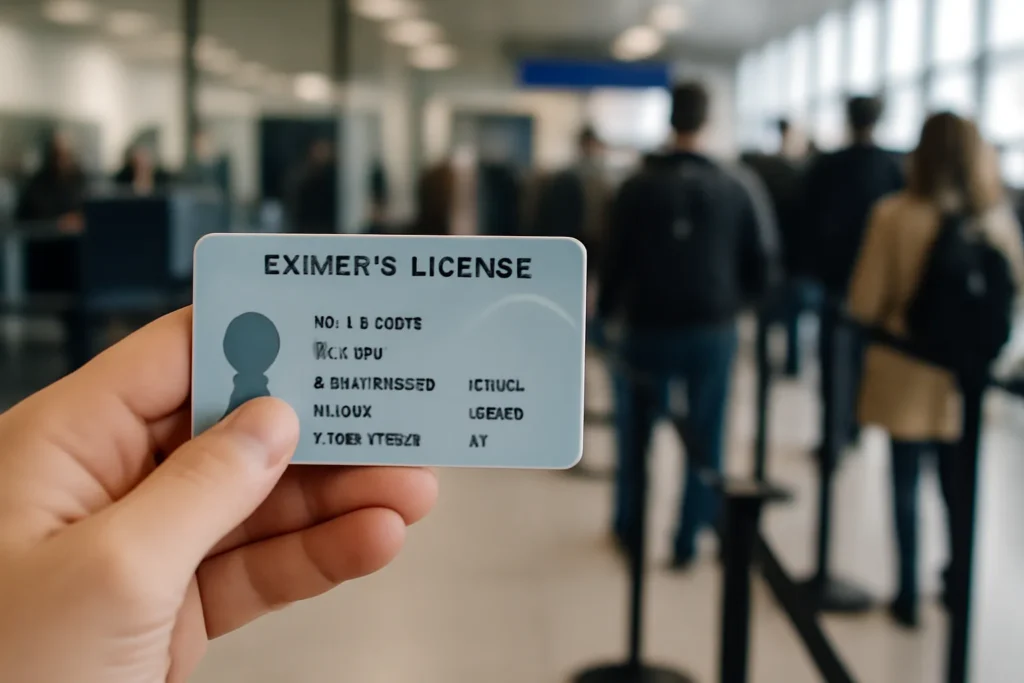The REAL ID Era Arrives: High Stakes and Frustration at the Gate
It was a scene reminiscent of the security shake-ups in the early 2000s: on May 7, 2025, travelers streamed into Newark Liberty International Airport only to face an entirely new gauntlet. Some fumbled for compliant identification while others anxiously recounted past run-ins with Transportation Security Administration (TSA) officials. For millions, this was the first real test of the federal government’s long-delayed REAL ID Act—a measure born out of the lessons of 9/11 but mired in bureaucratic delays and uneven state compliance for nearly two decades.
The frustrations were palpable. Flight delays, already exacerbated by air traffic staffing shortages and a recent, terrifying episode in which Newark’s controllers briefly lost contact with planes, collided head-on with a major identification overhaul. One woman at Terminal B muttered, “I’ve had this trip planned for months and now I might be stopped at the checkpoint?” The mix of anxiety and helplessness echoed nationwide as the Department of Homeland Security formally moved from requests to requirements.
Behind the headlines, what’s at stake is far more than an extra line at security. Michael Chertoff, former Secretary of Homeland Security and an early champion of REAL ID, has argued that enhanced documentation is a cornerstone for safer skies. Yet, for average citizens caught in the crossfire of policy and practicality, layers of new bureaucracy have only deepened the headaches that air travel in America is notorious for.
Who’s Ready, Who’s Not? Patchwork Compliance and Its Consequences
Numbers tell a fascinating story: according to data from the Texas Department of Public Safety and the Colorado DMV, more than 95% of Texans and Coloradans already carry REAL ID-compliant cards. “If you’re flying out of Houston or Denver, you’re probably covered,” Amanda Meyer, a Connecticut-based traveler, opined after breezing through Bush Intercontinental Airport. Yet, this island of readiness doesn’t extend everywhere. At LaGuardia in New York, non-compliant passengers faced longer waits and the unnerving possibility of being rerouted or denied boarding altogether.
Colorado has quietly led the nation by making REAL ID mandatory for all eligible residents since 2013, a decade-long head start that other states are only now racing to match. It’s no surprise, then, that chaotic scenes were less common in Denver than in the tri-state region’s big airports. Nationally, Homeland Security Secretary Kristi Noem recently cited an “over 81% compliance rate,” but acknowledged lingering gaps, especially in states slow to update their systems.
“We have to remember: delays and confusion aren’t just about ID cards. They reflect deeper systemic neglect—infrastructure, labor, and leadership—that has been ignored for far too long.”
Where federal and state governments share responsibility, uneven action is almost guaranteed. Henry Harteveldt, a travel analyst with Atmosphere Research, told WSJ reporters, “Until we recognize that airport experience is a national public good, we’ll keep retrofitting Band-Aids onto systems built for a pre-9/11 world.” That warning rings especially true at Newark, where administrative bottlenecks stack onto flight delays caused by runway closures and a loss of veteran air traffic controllers now on trauma leave.
Even for those with the proper documentation, changes in airport flow and TSA staffing add new layers of uncertainty. “Arrive at least three hours before your flight if you don’t have a REAL ID,” TSA agents advised at LaGuardia—a recommendation that, for many, still wasn’t enough to avoid snarls at security. The policy does allow for alternatives such as passports or tribal IDs, but the underlying message is clear: without proactive planning, expect headaches at the checkpoint.
Beyond the ID: Deeper Wounds in America’s Air Travel System
Amid the rollout, it’s tempting to pin all blame on the new rules. Yet, a closer look reveals that REAL ID’s rough debut is merely the latest symptom of chronic underinvestment and political gridlock afflicting U.S. transportation. Compared with peer countries in Europe and Asia, America’s airports—often aging, crowded, and technologically outmoded—struggle to meet even basic 21st-century expectations. The Biden administration has committed billions in infrastructure upgrades, but progress has been slow—and vulnerable to congressional deadlock or shifting budget priorities, especially when conservative lawmakers balk at federal spending on transit.
Travel editor Peter Greenberg shrewdly pointed out that REAL ID was conceived as a bipartisan safeguard against terror, but has become mired in the very partisanship it hoped to circumvent. Conservative resistance to data sharing, state autonomy, and federal spending consistently delayed the program’s launch—and continues to hamper holistic reform of the aviation sector. The result? Americans are saddled with piecemeal solutions that put the onus on the traveler, not the system.
Is this the best we can do in the world’s wealthiest democracy? Why should citizens—especially elderly passengers, disabled travelers, or those new to the country—bear the brunt of disjointed policies and chronically underfunded infrastructure? As Harvard historian Jill Lepore reminds us, pivotal moments of reform in U.S. history have demanded collective investment and a recognition that “security and efficiency for all” must trump political purity tests.
The next few months will be a litmus test. Should rollouts continue smoothly in high-compliance states, but chaos persist at airports like Newark and LaGuardia, the real verdict falls not on individual preparedness, but on leaders failing to build equitable and reliable systems. The opportunity now is not just to enforce a stricter ID law, but finally address the structural problems that have hobbled American air travel for far too long.

